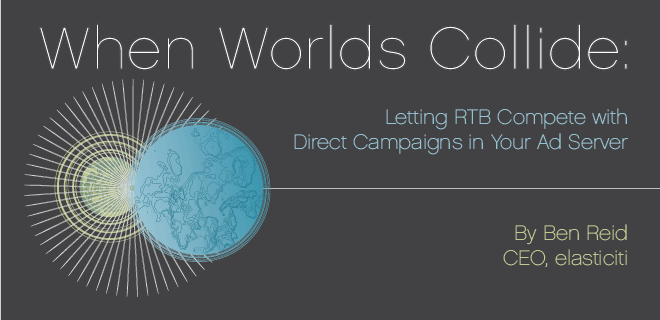
A number of partners I’ve been working with have mentioned casually that they are experimenting with creating a marketplace in their adserver by collapsing the prioritization settings. For a lot of publishers, this is the latest version of the struggle with sales channel conflict that they have been wrestling with for years with Ad Networks. And in similar fashion, the decision is based partly on the revenue needs of the moment and partly on the long-term revenue strategy.
Let’s define what’s commonly happening. Most publishers have some level of standardized prioritization set in the adserver for the direct-sold campaigns. The general idea is that more highly targeted tiers of advertising are smaller and command higher CPMs so it makes sense to have them serve first. And this is good for Ops since it means your higher CPM campaigns have the best shot at delivering evenly and on-time. Yield Management 101. Sometimes there are exceptions but for the most part, setting at least two tiers makes campaign pacing a lot easier since you are creating explicit instructions to the adserver which campaigns get preference for inventory. Then SSPs arrived and did essentially the same thing on the remnant side of the world. All good so far. However, with the maturation of the programmatic market, the potential to offer 1st party data via DMPs and Ad Exchanges, 3rd party and marketer-owned data, buyers can and do pay generously for the right impression at the right time. So the question then becomes, if I can do better on an impression by impression basis with a programmatic call, why wouldn’t I? Good question.
The obviously reason to allow the two sales channels to compete directly is that it should make more revenue on a per-ad-call basis. Allowing the adserver to decide purely on CPM will find the best CPM wherever that may be. The publishers I’ve worked with report they do see increases in eCPM with this technique. Further, today, they are letting primarily RON lines compete with RTB and there might be larger gains if additional levels of prioritization are collapsed.
But of course there is no free lunch. Buyers are in the business of getting the best possible price to achieve their campaign goals. If they can get your same audience at a discount, they will. So it makes sense to be deliberate about which targets are available and where the floor price should be. If you are a site with a single focus, like travel or technology, even offering RON should be at a higher floor than RON on a heterogeneous site (like a news site) since your traffic is all targeted. In similar fashion, if your inventory has some or a lot of scarcity, allowing programmatic to compete with direct-sold campaigns may increase the availability of the targeting in the marketplace. There is the risk of commoditization unless pricing floors are set appropriately in line with the value.
The last and probably largest concern I would watch closely is the potential impact to direct sold campaigns in terms of delivery. Even if you are only displacing some of the low-CPM line items, the buyer has an expectation that they will deliver in full and as close to evenly paced as possible. Impacts to those campaigns may not be felt immediately but if buyers don’t feel they had the level of service and performance they had expected, winning, or even getting on the consideration list for the next RFP may be impacted. Direct sales is still very relationship-oriented and tactics that risk those campaigns, risk those relationships, and dollars, in the long run.
As with all new market dynamics, it’s good for Ops pros to be out in front of the issues, helping shape the way your organization thinks about these questions and leading the development of your company strategy. After considering your current sales strategy, the risks and opportunities unique to your site/network, I’d recommend sharing a test plan with your CRO. Outline how long the test will run (I’d recommend 7-21 days), which campaign levels and potential advertisers/campaigns may be impacted, and what are the hard and soft criteria to be evaluated*. I would definitely recommend the test be finite in duration and for a wrap-up report be created both for discussion as well as documentation of the test should others in the company wish to understand the initiative. It’s a judgment call on whether Sales Execs are informed during test but if you do decide to go forward, it’s best if Sales Management informs them of the decision and if they feel it’s impacting their direct sales, how to address with management. Lastly, evaluate overall impact if you do go forward at various points along the year and it’s not meeting the objectives, consider pausing and re-evaluating.
I’d love to hear how this is working for you. Feel free to comment here or email me at [email protected].
*Some suggestions for criteria to look at prior, during, and post-test: eCPM , revenue, number of campaigns on track, customer satisfaction, operational level of effort to support, sell-through. Long-term, you may also wish to study the number of advertisers sold directly and whether the average campaign size increases or decreases.